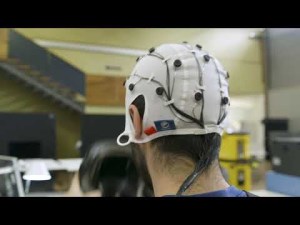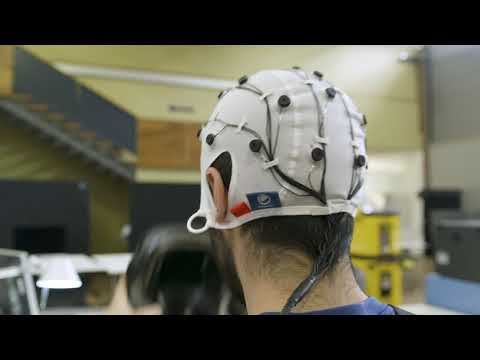Cycling in busy city streets is not without its risks.
But what if your bike had the ability to detect a potential danger and help you avoid a serious accident?
Researchers from Monash University, IBM Research-Australia and the University of Southampton claim to have developed an eBike prototype with the ability to “read” a cyclist’s mind and respond to a potentially dangerous situation.
The new technology, they say, can give cyclists a much safer and more enjoyable ride.
Cycling is having an unprecedented surge in popularity in Australia brought on by the COVID-19 lockdown.
A survey conducted in Melbourne from November last year to April this year found a 270 per cent increase in the number of riders on key bike paths.
And with more cyclists taking to the streets the risk of accidents also increases.
To help mitigate bike accidents and make cycling safer, the researchers have developed an electroencephalogram (EEG) supported eBike prototype, called Ena, which monitors electrical activity on the brain corresponding to changes in the rider’s field of view.
Changes to the field of view in peripheral awareness is often linked with a decrease in the quality of human performance.
Potential scenarios
The EEG measures electrical signals in the cyclist’s occipital lobe, the visual processing area of the brain, feeds into a small computer in their backpack, which converts the signals from brain activity to instructions for the bike’s engine.
A study with 20 participants that was conducted as part of this research revealed various themes and design tactics suggesting that peripheral awareness as a neurological state is viable to align human-machine integration with internal bodily processes.
In the case of cyclists, potential scenarios such as a car cutting them off or an obstruction to a bike path, are very likely circumstances. Ena offers a human-computer integration that allows for a safer and more enjoyable riding experience.
The lead researcher of the project is IBM Researcher Josh Andres, who is also a member of the Exertion Games Lab at Monash University and a research fellow at the Wellthlab.
Working with the team from all three institutions, he designed a system that reads the rider’s field of view via their brain activity. The system can determine when the rider’s field of view is broad, or in other words when the rider is aware of their surroundings.
Promising results
During this period the system offers engine support to go faster. However, if the rider’s field of view narrows as a response to a threat, such as a car veering, the system immediately stops engine support, allowing the rider to go slower while they decide how to respond to the situation.
“The new research shows promising results on how humans can work together with intelligent systems in everyday life to extend their abilities,” says Andres.
“There are several scenarios where technology like this could be beneficial,” he says.
The technology could increase safety and response time for emergency personnel to potentially monitor a patient’s peripheral vision to learn about a condition.
It could also be used in sports to help soccer players develop their peripheral vision.
Professor Florian ‘Floyd’ Mueller, Director of the Exertion Games Lab in the Faculty of Information Technology at Monash University and co-creator of this technology, says Ena has the potential to give cyclists another set of eyes on the road.
He sees this groundbreaking research as an opportunity to further human-computer interaction experiences in real-time, where the rider and the eBike “fuse” together to support each other.
“Through our research, we’ve been able to align internal bodily processes, such as neural activity, with machine integration.
"Via Ena, we are able to explore technology that integrates with the human body to amplify the happiness that being physically active offers, while keeping you safer", Professor Mueller said.
Co-creator of the project, Professor of Computer Science and Human Performance, m.c schraefel and Director of the Wellthlab at the University of Southampton UK, says peripheral awareness is something that changes without us realising.
“By actually making these shifts available to people as deliberate feedback on how someone is doing, and then using that feedback to help them respond, especially to stressful situations, we are creating new opportunities not just for innovative interactive systems, but for all of us to build better awareness, and potentially to make better healthier choices.” Professor schraefel said.
To read the research paper, visit: https://bit.ly/2V5ZxzF


